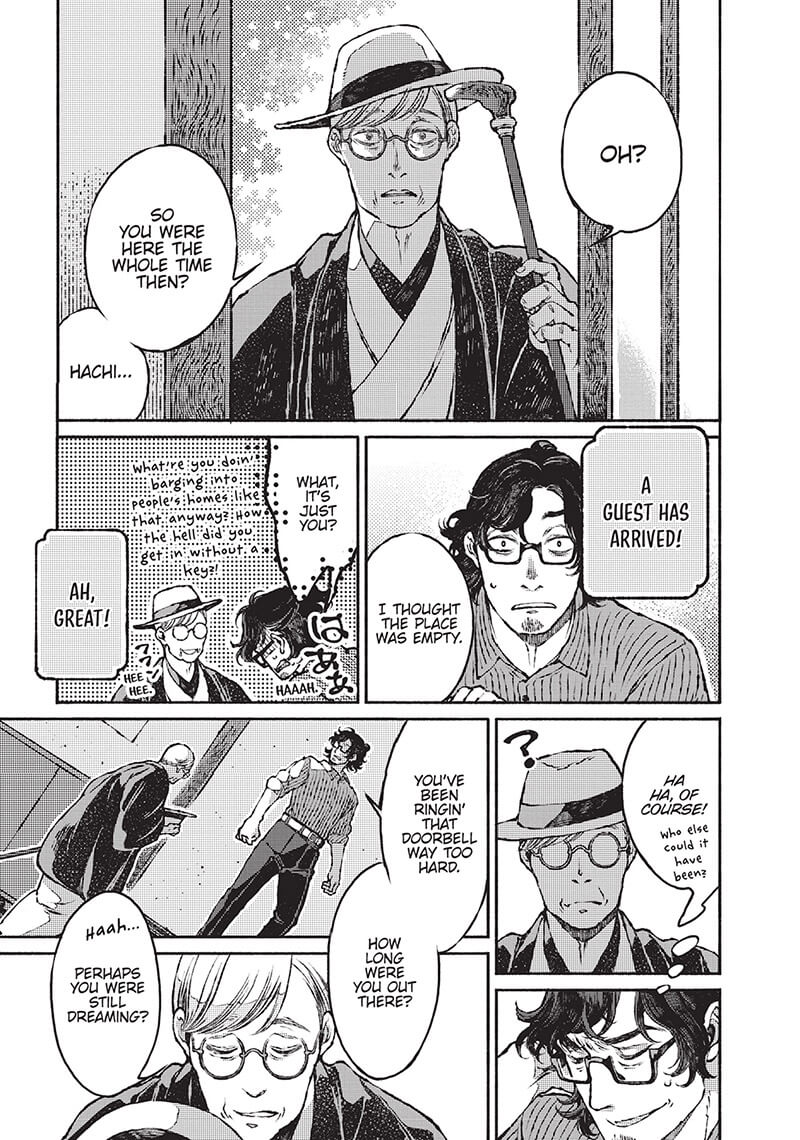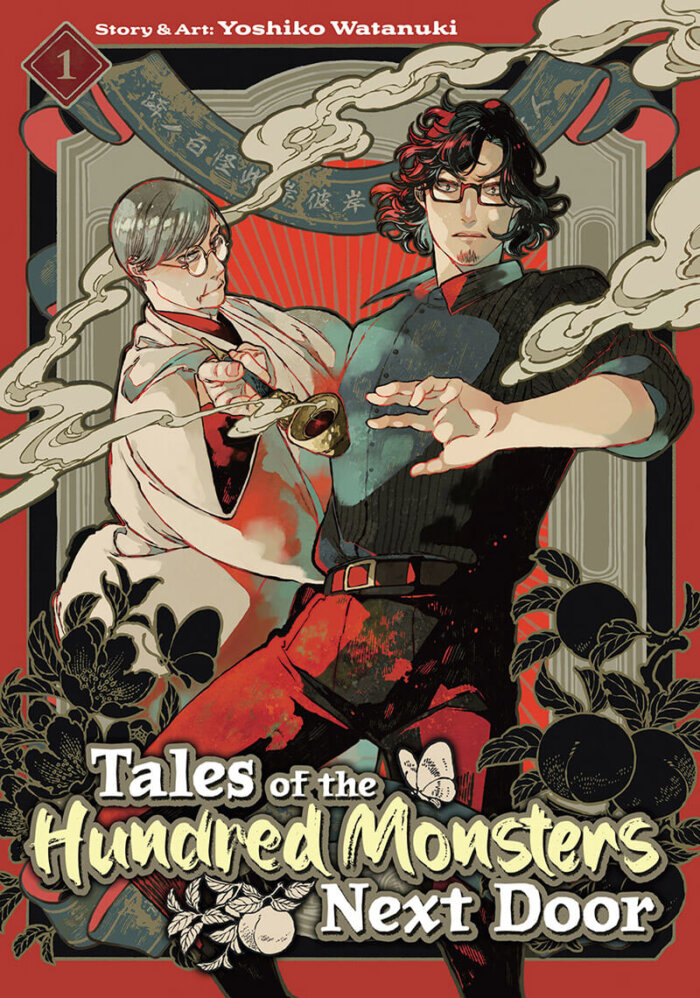Content Warning: Themes of horror (supernatural and body), ghosts, and death.
Synopsis
Tales of the Hundred Monsters Next Door is an episodic horror seinen manga with supernatural elements. Katagiri Jinpachi, a book designer by trade, made an unlucky detour while at the convenience store one day and ended up at a demon “black market.” While trying to retrieve his wallet, he ends up accidentally striking a deal and gains the power to see the supernatural. With this new power, he ends up teaming up with “Ghost Sensei” Harada Oriza, an older man and painter often dressed in traditional Japanese clothes. Oriza insists that they have a special fate together as more and more strange incidents start popping up around Jinpachi.
The Good
I have been in the mood for reading more horror with Japanese yokai and ghosts, and the Tales of the Hundred Monsters Next Door (I will refer to it as Tales from now) really delivers. From the first page, I was transported into modern Japan with a ghost twist. Jinpachi, a book designer and book repairer, ends up losing his wallet, and this cascades into his whole future changing because he accidentally makes a deal that trades away his ordinary life for a path where supernatural phenomenon flock to him like moths to a flame. Tales includes a cast of older characters that are adults with jobs, including Oriza, who has a full head of grey hair and wrinkles.
Jinpachi is the younger half of the duo, and it’s his push and pull with Oriza that makes the manga compelling for me to read. Jinpachi doesn’t have many people that he knows that can help with his new ghost attraction problem. Part of the appeal for this manga is trying to keep on top of what things are true or part of the “real world” as Jinpachi is pulled into cases or worlds that he has no experience in dealing with.
Jinpachi, over the course of the story, specifies that he is gay, and Oriza is implied to be bi. The manga isn’t classified as a BL, as romance isn’t really the focus in the story. Oriza doesn’t seem to have Jinpachi’s well-being as a priority, and it makes their dynamic fun to watch. Jinpachi is attracted to the much older Oriza, though, to his detriment, the way Oriza flips between helpful and manipulative creates an off-kilter feeling. Oriza appears to give good advice, but following it always seems to lead to a dangerous situation that Jinpachi has to then get out of.
The art is another highlight. The woodblock and dreamy smoke sequences really enhance how strange, yet, beautiful, the worlds that Jinpachi is pulled into are. The art has a certain rustic and analog feel that fits well with the horror elements. I also enjoyed looking at the textures and backgrounds.
The Bad

I finished one volume, and I’m looking forward to more. My very small gripe might be that I wish there were a translator’s notes or appendix that goes into depth about the references, kanji, and nicknames that appear in Tales. There are a few Japanese-specific signs and words that appear and are used in this volume. The explanations for kanji are supplemented by little footnotes in the corner of a panel, or directly explained in the story, which is nice, but there are times that I feel like the note was left off, or could have been explained in more detail for people that are interested in reading more about the Japanese-specific yokai or ghost-specific words.
There is a nursery rhyme that appears in the prologue, and I feel like there was a missed opportunity there to give interested readers more information about it. Another part where additional information would be helpful is when Oriza arrives at the nicknames of “Hachi” and “Hachiko” for Jinpachi (“Pachi? Hachi?”). Maybe there wasn’t enough information to explain why the author made Oriza pick the nickname “Hachiko,” but I feel like readers interested in a ghost/demon/yokai manga with a Japanese flavor are also interested in the details like that.

The Verdict
I really enjoyed reading Tales, and I hope that more volumes come soon. If you’re looking for a heavier BL touch, you will need to look elsewhere, but there’s enough to feed the “old man yaoi” fujoshi brain. The setting, stories, and characters mesh well together to create a creepy adventure. Japanese horror has always been a fascination of mine, and I’m glad that manga like this are being localized into English. I hope to see more of how Oriza and Jinpachi’s partnership develops with time (even if it is manipulative in nature).
Tales of the Hundred Monsters Next Door is available in print and digitally from Amazon, Barnes & Noble, Bookshop.org, and Indigo.
If you like Tales of the Hundred Monsters Next Door, you might also like…
- The Night Beyond the Tricornered Window
- Spirit Hunter: Death Mark
- xxxHOLiC by Clamp
- Showa Genroku Rakugo Shinju
Credits
Story and Art: Yoshiko Watanuki
Translation: Deniz Amasya
Lettering: Giuseppe Antonio Fusco
Cover Design: H. Qi
Copy Editor: Leighanna DeRouen
Proofreader: Elliott Santomare
Production Designer: Ria Linn Johnson
Editor: Linda Lombardi
Published in English by Seven Seas Entertainment
Thank you to Seven Seas Entertainment for providing a review copy. Receiving this copy did not affect the reviewer’s opinions as expressed here.
Article edited by: Anne Estrada

Featured Sponsor - JAST
The sweetest romance and the darkest corruption, the biggest titles and the indie darlings; for visual novels and eroge, there's nowhere better.
Big thank you to our supporters
From their continous support, we are able to pay our team for their time and hard work on the site.
We have a Thank-You page dedicated to those who help us continue the work that we’ve been doing.
See our thank you page





